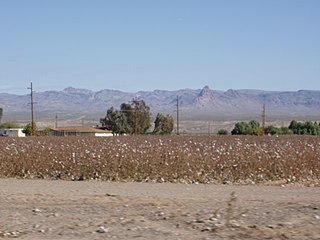A felony is traditionally considered a crime of high seriousness, whereas a misdemeanor is regarded as less serious. The term "felony" originated from English common law to describe an offense that resulted in the confiscation of a convicted person's land and goods, to which additional punishments including capital punishment could be added; other crimes were called misdemeanors. Following conviction of a felony in a court of law, a person may be described as a felon or a convicted felon.

Murder is the unlawful killing of another human without justification or valid excuse, especially the unlawful killing of another human with malice aforethought. This state of mind may, depending upon the jurisdiction, distinguish murder from other forms of unlawful homicide, such as manslaughter. Manslaughter is killing committed in the absence of malice, brought about by reasonable provocation, or diminished capacity. Involuntary manslaughter, where it is recognized, is a killing that lacks all but the most attenuated guilty intent, recklessness.
Burglary, also called breaking and entering (B&E) and sometimes housebreaking, is the act of illegally entering a building or other areas without permission, typically with the intention of committing a criminal offence. Usually that offence is theft, larceny, robbery, or murder, but most jurisdictions include others within the ambit of burglary. To commit burglary is to burgle, a term back-formed from the word burglar, or to burglarize.

Tribal sovereignty in the United States is the concept of the inherent authority of Indigenous tribes to govern themselves within the borders of the United States.
The rule of felony murder is a legal doctrine in some common law jurisdictions that broadens the crime of murder: when someone is killed in the commission of a dangerous or enumerated crime, the offender, and also the offender's accomplices or co-conspirators, may be found guilty of murder.

The United States Indian Police (USIP) was organized in 1880 by John Q. Tufts the Indian Commissioner in Muskogee, Indian Territory, to police the Five Civilized Tribes. Their mission is to "provide justice services and technical assistance to federally recognized Indian tribes." The USIP, after its founding in 1880, recruited many of their police officers from the ranks of the existing Indian Lighthorsemen. Unlike the Lighthorse who were under the direction of the individual tribes, the USIP was under the direction of the Indian agent assigned to the Union Agency. Many of the US Indian police officers were given Deputy U.S. Marshal commissions that allowed them to cross jurisdictional boundaries and also to arrest non-Indians.
Most jurisdictions in the United States of America maintain the felony murder rule. In essence, the felony murder rule states that when an offender kills in the commission of a dangerous or enumerated crime, the offender, and also the offender's accomplices or co-conspirators, may be found guilty of murder. It means that the common law malice required for murder is "implied as a matter of law for homicides arising from felonies." It is a widely criticized feature of American criminal law. Initially, it was widely believed by scholars that the felony murder rule had originated in England. However, more recent scholarship has argued that it likely originated in America separately from England. Its historic roots have been called "deep but terribly obscure".
Taylor v. United States, 495 U.S. 575 (1990), was a U.S. Supreme Court decision that filled in an important gap in the federal criminal law of sentencing. The federal criminal code does not contain a definition of many crimes, including burglary, the crime at issue in this case. Yet sentencing enhancements applicable to federal crimes allow for the enhancement of a defendant's sentence if he has been convicted of prior felonies. The Court addressed in this case how "burglary" should be defined for purposes of such sentencing enhancements when the federal criminal code contained no definition of "burglary." The approach the Court adopted in this case has guided the lower federal courts in interpreting other provisions of the criminal code that also refer to generic crimes not otherwise defined in federal law.

Indian country jurisdiction, or the extent which tribal powers apply to legal situations in the United States, has undergone many drastic shifts since the beginning of European settlement in America. Over time, federal statutes and Supreme Court rulings have designated more or less power to tribal governments, depending on federal policy toward Indians. Numerous Supreme Court decisions have created important precedents in Indian country jurisdiction, such as Worcester v. Georgia, Oliphant v. Suquamish Tribe, Montana v. United States, and McGirt v. Oklahoma.
In the United States, the law for murder varies by jurisdiction. In many US jurisdictions there is a hierarchy of acts, known collectively as homicide, of which first-degree murder and felony murder are the most serious, followed by second-degree murder and, in a few states, third-degree murder, which in other states is divided into voluntary manslaughter, and involuntary manslaughter such as reckless homicide and negligent homicide, which are the least serious, and ending finally in justifiable homicide, which is not a crime. However, because there are at least 52 relevant jurisdictions, each with its own criminal code, this is a considerable simplification.
Common law offences are crimes under English criminal law, the related criminal law of some Commonwealth countries, and under some U.S. state laws. They are offences under the common law, developed entirely by the law courts, having no specific basis in statute.
Ex parte Crow Dog, 109 U.S. 556 (1883), is a landmark decision of the Supreme Court of the United States that followed the death of one member of a Native American tribe at the hands of another on reservation land. Crow Dog was a member of the Brulé band of the Lakota Sioux. On August 5, 1881 he shot and killed Spotted Tail, a Lakota chief; there are different accounts of the background to the killing. The tribal council dealt with the incident according to Sioux tradition, and Crow Dog paid restitution to the dead man's family. However, the U.S. authorities then prosecuted Crow Dog for murder in a federal court. He was found guilty and sentenced to hang.

Criminal law is a system of laws that is connected with crimes and punishments of an individual who commits crimes. In comparison, civil law is where the case argues their issues with one entity to another entity with support of the law. Crimes can vary in definition by jurisdiction but the basis for a crime are fairly consistent regardless.

The Enabling Act of 1906, in its first part, empowered the people residing in Indian Territory and Oklahoma Territory to elect delegates to a state constitutional convention and subsequently to be admitted to the union as a single state.
United States v. John, 437 U.S. 634 (1978), was a case in which the Supreme Court of the United States held that lands designated as a reservation in Mississippi are "Indian country" as defined by statute, although the reservation was established nearly a century after Indian removal and related treaties. The court ruled that, under the Major Crimes Act, the State has no jurisdiction to try a Native American for crimes covered by that act that occurred on reservation land.
United States v. Ramsey, 271 U.S. 467 (1926), was a U.S. Supreme Court case in which the Court held that the government had the authority to prosecute crimes against Native Americans (Indians) on reservation land that was still designated Indian Country by federal law. The Osage Indian Tribe held mineral rights that were worth millions of dollars. A white rancher, William K. Hale, devised a plot to kill tribal members to allow his nephew, who was married to a tribal member, to inherit the mineral rights. The tribe requested the assistance of the federal government, which sent Bureau of Investigation agents to solve the murders. Hale and several others were arrested and tried for the murders, but they claimed that the federal government did not have jurisdiction. The district court quashed the indictments, but on appeal, the Supreme Court reversed, holding that the Osage lands were Indian Country and that the federal government therefore had jurisdiction. This put an end to the Osage Indian murders.
United States v. Antelope, 430 U.S. 641 (1977), was a United States Supreme Court case in which the Court held that American Indians convicted on reservation land were not deprived of the equal protection of the laws; (a) the federal criminal statutes are not based on impermissible racial classifications but on political membership in an Indian tribe or nation; and (b) the challenged statutes do not violate equal protection. Indians or non-Indians can be charged with first-degree murder committed in a federal enclave.
Sharp v. Murphy, 591 U.S. ___ (2020), was a Supreme Court of the United States case of whether Congress disestablished the Muscogee (Creek) Nation reservation. After holding the case from the 2018 term, the case was decided on July 9, 2020, in a per curiam decision following McGirt v. Oklahoma that, for the purposes of the Major Crimes Act, the reservations were never disestablished and remain Native American country.
McGirt v. Oklahoma, 591 U.S. ___ (2020), was a landmark United States Supreme Court case which held that the domain reserved for the Muscogee Nation by Congress in the 19th century has never been disestablished and constitutes Indian country for the purposes of the Major Crimes Act, meaning that the State of Oklahoma has no right to prosecute American Indians for crimes allegedly committed therein. After McGirt, the Oklahoma Court of Criminal Appeals applied the McGirt rationale in six similar cases, finding that Congress established reservations within the final incarnation of the Indian Territory for eight other Indigenous nations which have not been disestablished. As a result, almost the entirety of the eastern half of what is now the State of Oklahoma remains Indian country, meaning that criminal prosecutions of Native Americans for offenses therein falls outside the jurisdiction of Oklahoma’s court system. In these cases, jurisdiction properly vests within the Indigenous judicial systems and the federal district courts under the Major Crimes Act.
Oklahoma v. Castro-Huerta, 597 U.S. ___ (2022), was a United States Supreme Court case related to McGirt v. Oklahoma, decided in 2020. In McGirt, the Supreme Court ruled that the U.S. Congress never properly disestablished the Indian reservations of the Five Civilized Tribes in Oklahoma when granting its statehood, and thus almost half the state was still considered to be Native American land. As a result of McGirt, crimes under the Major Crimes Act by Native Americans in the former reservations are treated as federal crimes rather than state crimes.






